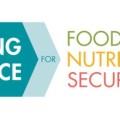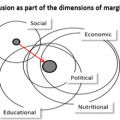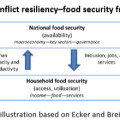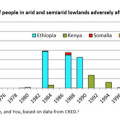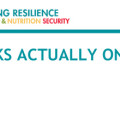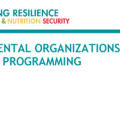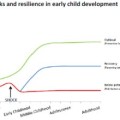In 2012, the world was home to about 28 million people who had fled their home region or country, and most of these people were hosted in developing countries. These refugees and internally displaced people (IDPs) have tended to be the focus of publicity and relief efforts—but what happens to the resilience and food security >> Read more
Highlights from Conference Brief 9: Pastoralism and Resilience South of the Sahara
Pastoralists in the Horn of Africa face five big challenges to their resilience: They are losing land to farmers, irrigation, tourism, and land investments by outside investors. Conflict and violence have disrupted livelihoods and markets and increased vulnerability during drought. Population growth has put heavy pressure on land resources. Among pastoralists, there are large differences >> Read more
Highlights from Conference Brief 15- “Resilience and Exclusion: Development Policy Implications”
A new conference brief by Joachim von Braun and Sukhadeo Thorat makes the case that overcoming exclusion is a complex political agenda with legal, cultural, social, economic, technological, and governance dimensions. Exclusion is a global phenomenon, not just one of developing countries, the authors note, and is fundamentally a human rights issue. Exclusion quite often erodes the resilience capacity of social groups. It brings about unequal access to public services, making excluded people’s efforts to overcome shocks more difficult than those of their counterparts from nonexcluded groups. Moreover, resilience and exclusion are in a vicious dynamic relationship over time. Typically, social exclusion perpetuates the effects of shocks and thereby undermines resilience. The socially excluded groups may collapse or converge to a worse-off steady state after disruptions, taking a protracted time to recover from shocks.
Highlights from Conference Brief 3: Building resilience to conflict through food security policies and programs
Food insecurity and conflict often go hand-in-hand: a lack of food can ignite conflict and conflict can result in food shortages and unavailability. What’s more, the scope of the problem is far reaching, as more than one and a half billion people live in areas impacted by conflict. In their 2020 Conference Brief, Building Resilience >> Read more
Highlights From Conference Briefs 12 and 14: Building Resilience In The Face Of Conflict
In the past few decades, food-related challenges like climate change and food and nutrition security coupled with other social and political issues have led to conflict and unrest on both the national and regional scale. Climatic shocks are considered to be one of the root causes of conflict, especially in resource-constrained settings. At the same time, conflicts tend to exacerbate existing vulnerability, leading to poverty‐conflict traps at the household, community, and national levels. In their conference brief, Margherita Calderone, Derek Headey, and Jean-François Maystadt review the research about the impact of climate change >> Read more
Highlights from Conference Brief 5: Are Shocks Actually on the Rise?
From extreme weather events to rising and highly volatile food prices, poor and vulnerable populations are subject to a bevy of shocks that threaten their basic food and nutrition security. In the face of global climate change and other recent food price spikes, it seems to many that such events are occurring more and more >> Read more
Highlights from 2020 Conference Brief 7: Nongovernmental organizations’ approaches to resilience programming
Stories of nongovernmental organizations (NGOs) providing emergency relief in the aftermath of natural disasters and other humanitarian crises are familiar parts of the news. When NGOs such as CARE or Mercy Corps support medical services in South Sudan or bring food to people affected by Typhoon Haiyan in the Philippines, we are not surprised. Less >> Read more
Highlights from Conference Brief 4: Local sources of resilience
Before government programs and international aid efforts, people coped with disasters, famine, conflicts, and other shocks by coming together as a community and relying on their networks—in other words, using social capital. Social capital, in the form of community-based organizations and social networks, has traditionally played an important, but largely unexplored, role in building resilience. >> Read more
Highlights from Conference Brief 18: Strengthening the links between resilience and nutrition
In the field of food policy, nutrition and resilience are strongly interlinked conceptually—and now Charlotte Dufour, Domitille Kauffmann, and Neil Marsland are trying to bind the two much more tightly in practice. Resilience, according to the Food and Agriculture Organization of the United Nations (FAO), is “the ability to prevent disasters and crises as well >> Read more
Highlights from Conference Briefs 10, 17 and 19
There is a wide recognition that building the resilience of the rural poor—the most vulnerable group—requires helping the affected recover from various shocks, such as weather and nutritional shocks.

